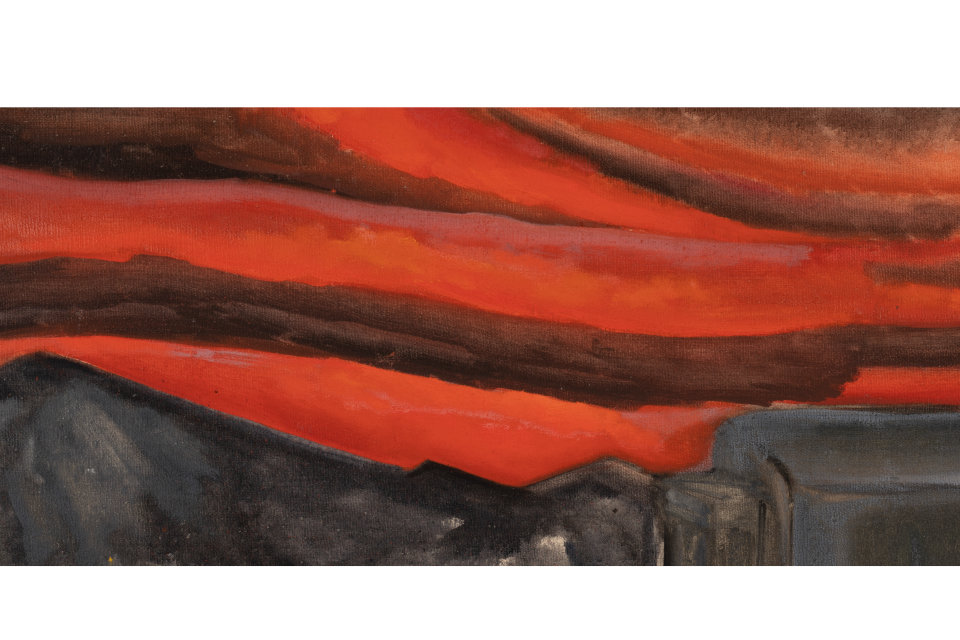
Pictures of Belonging: Miki Hayakawa, Hisako Hibi, and Miné Okubo—Artists
Learn about these trailblazing Japanese American artists whose artwork illuminates the beauty, connections, turmoil, and resilience of their remarkable lives through the exhibition and accompanying catalog.
Artists

Miki Hayakawa (1899–1953)
An Issei who emigrated with her parents from Nemuro, Hokkaido in Japan to California, Miki Hayakawa reportedly went against her father’s wish and pursued art as her vocation. She attended the California School of Arts and Crafts around 1920 and the California School of Fine Arts (CSFA) in San Francisco from 1923 through the late 1920s. Her talent and dedication was recognized by a series of honors and her work was exhibited at the Golden Gate Institute, the Oakland Art Gallery/Oakland Art League, the San Francisco Art Association, the San Francisco Japanese Art Association, the San Francisco Museum of Art (now the San Francisco Museum of Modern Art), and the 1939–40 Golden Gate International Exposition.
Following Executive Order 9066, she moved to Santa Fe, New Mexico, in 1942, where she established herself as an active and beloved member of the local artist communities, and continued her artistic output. From 1925 to 1953, she participated in California and New Mexico art exhibitions each year.

Hisako Hibi (1907–1991)
Hisako Hibi came from a farming village in the Fukui Prefecture in Japan. She pursued her education in the late 1920s at the California School of Fine Arts in San Francisco where she met her good friend Miki Hayakawa, as well as fellow artist and future husband Matsusaburo George Hibi. Hisako showed her paintings in art exhibitions around the San Francisco Bay Area in the 1930s while raising two children and assisting her husband’s Japanese language school in Hayward, California. Her art received critical attention, including being selected by the juries to represent California art in the landmark Golden Gate International Exposition in 1939–40, along with Hayakawa and Okubo.
During World War II, the Hibis were incarcerated at the Tanforan temporary detention center in California and the Topaz concentration camp in Utah. After the war, she moved to New York City in 1945, lost her husband to cancer in 1947, and raised her children by working as a garment factory worker. Upon returning to California in 1954, she worked as a live-in maid and became a respected member of the San Francisco art circles for nearly forty years. Her diverse body of artwork attest to her passion, resilience, and dedication as a lifelong artist.

Miné Okubo (1912–2001)
Born in Riverside, California, in 1912, Miné Okubo, is known for her iconic graphic memoir, Citizen 13660, the groundbreaking first-person account of the Japanese American incarceration that was released by Columbia University Press in 1946 and won the American Book Award in 1984.
Okubo graduated from the University of California, Berkeley, and exhibited widely to critical acclaim in the late 1930s. She, Miki Hayakawa, and Hisako Hibi were the only female artists of Japanese descent to represent the US in the 1939–40 Golden Gate International Exposition. During World War II, Okubo taught art at the Tanforan temporary detention facility and Topaz concentration camp before moving to New York City when Fortune invited her to work on a special illustration assignment.
Postwar, her commercial illustrations appeared in Time, Life, the New York Times, and other publications. In 1983, she testified before the US Commission on Wartime Relocation and Internment of Civilians and urged the government to apologize to those who were unjustly imprisoned and displaced during World War II. In 1991 the College Art Association’s Women’s Caucus for Art gave her a Lifetime Achievement Award that recognized her as a lifelong artist and an advocate for righting historic wrongs. She never stopped making art. After her passing, much of her work was donated to JANM and the Center for Social Justice & Civil Liberties in Riverside.
